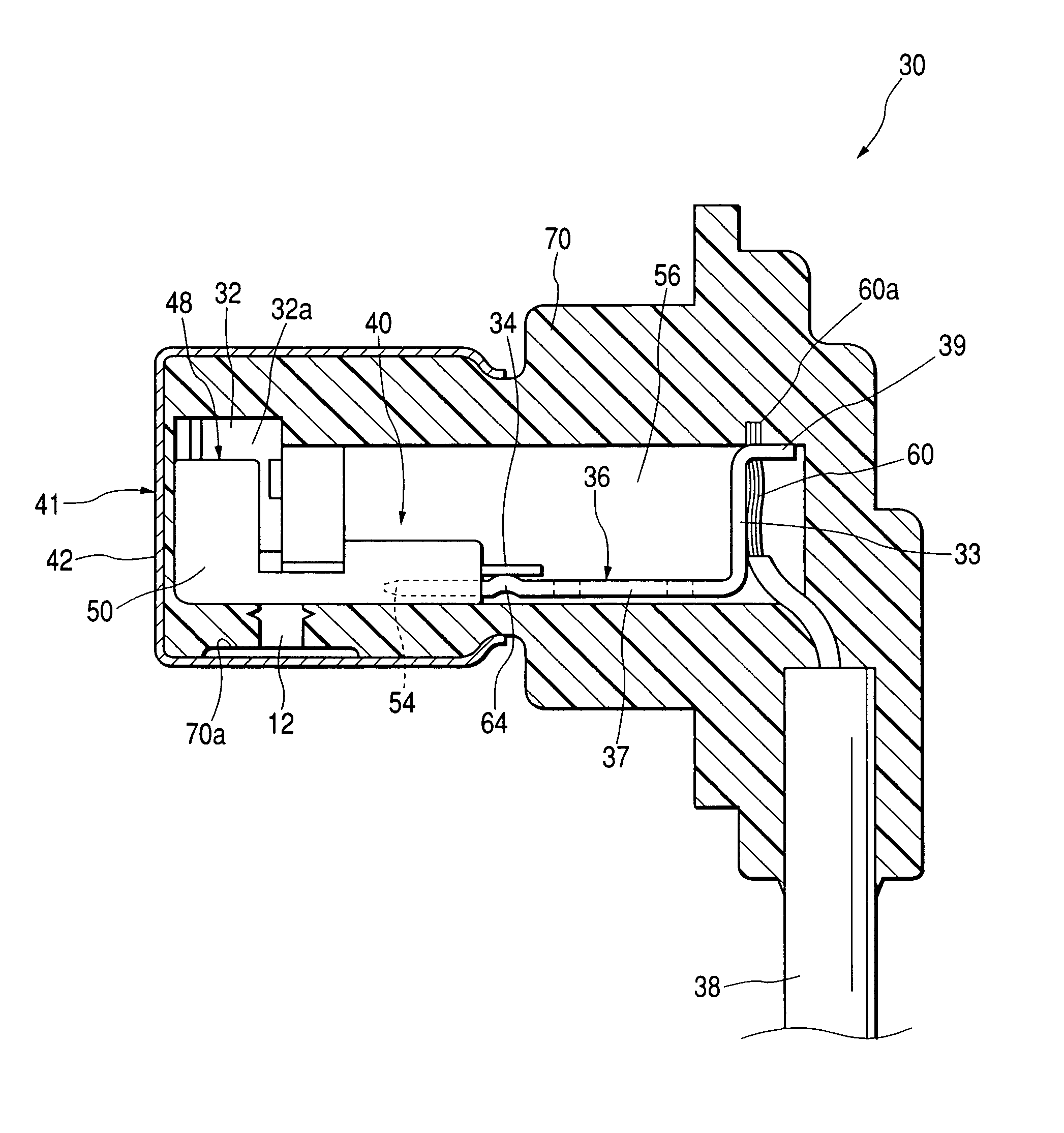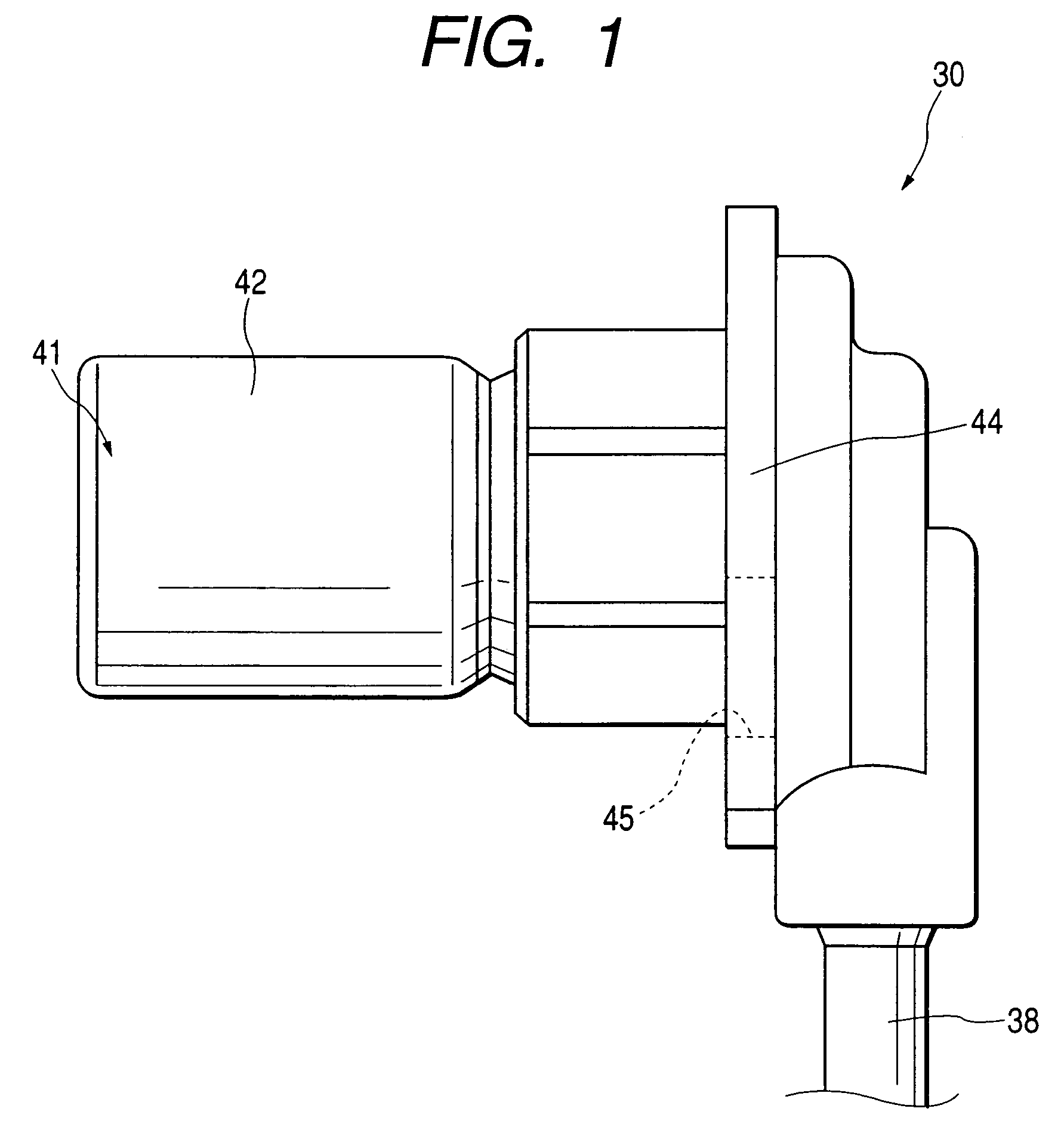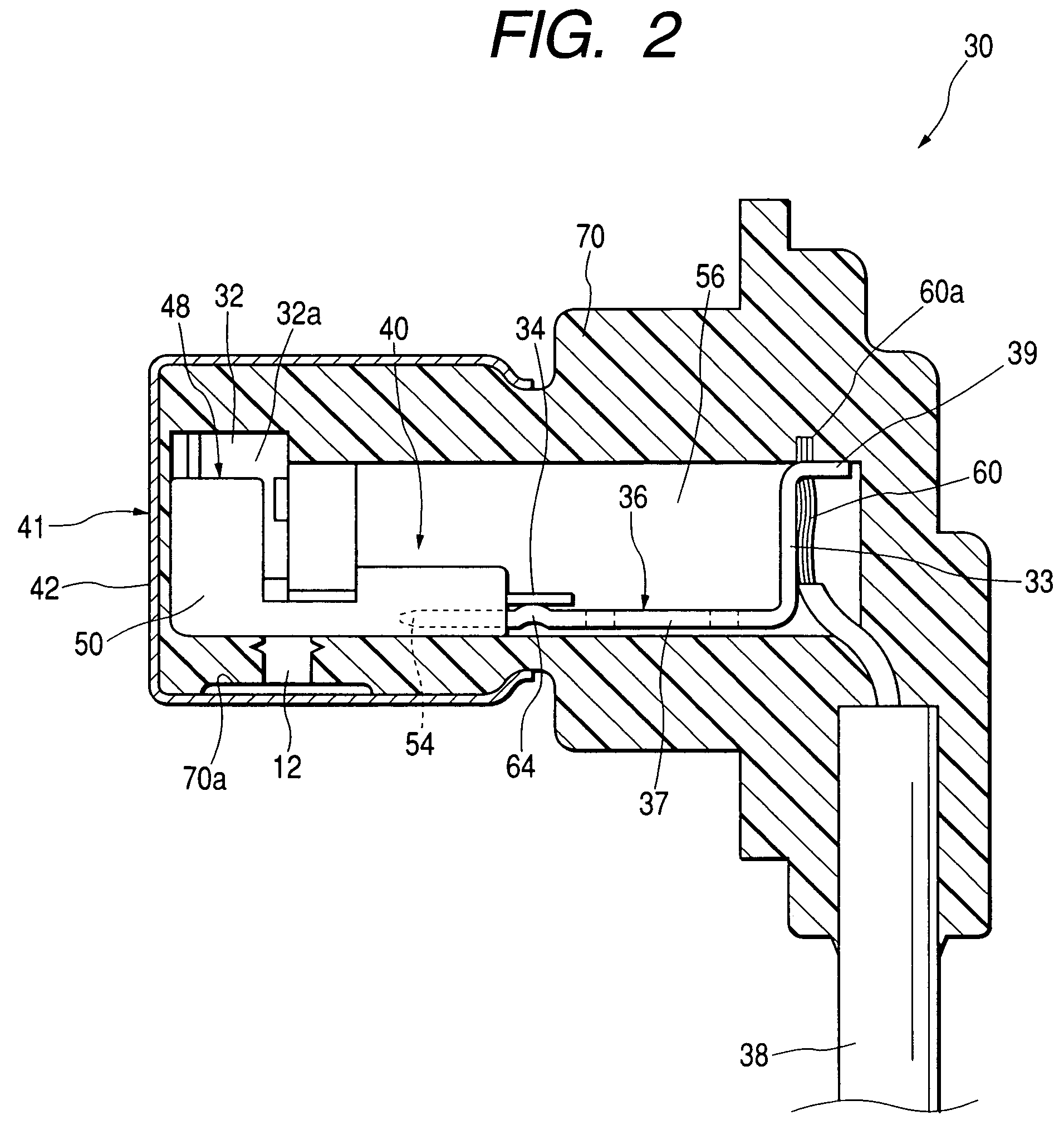Wheel speed sensor, method for producing the same, terminal and method for welding terminal and electric wire
a technology of speed sensor and terminal, applied in the direction of acceleration measurement using interia force, galvano-magnetic hall-effect devices, instruments, etc., can solve the problems of sensor damage, number of man hours required to assemble the respective constituent parts, and liable disconnecting of the connecting portion between the lead portion and the electric wir
- Summary
- Abstract
- Description
- Claims
- Application Information
AI Technical Summary
Benefits of technology
Problems solved by technology
Method used
Image
Examples
Embodiment Construction
[0059]A preferred embodiment of the invention will be described below with reference to the accompanying drawings.
[0060]The embodiment will describe a wheel speed sensor for use in detecting wheel speeds of vehicles such as automobiles and motorcycles and a method for producing the same wheel speed sensor with reference to the accompanying drawings.
[0061]Referring to FIGS. 1 to 5C, the construction of the wheel speed sensor will be described.
[0062]In FIG. 1, a wheel speed sensor 30 is provided together with a brake system provided on each wheel of a vehicle and is disposed in such a manner as to confront a rotor of a magnetic material (not shown). The wheel speed sensor 30 is designed to detect the speed of the wheel using a detection element (a Hall IC or a MR element). The detection element is adapted to detect a change in voltage associated with a change in magnetic flux which occurs when irregularities or slit holes formed in the rotor pass through the detection element.
[0063]Th...
PUM
| Property | Measurement | Unit |
|---|---|---|
| Diameter | aaaaa | aaaaa |
| Speed | aaaaa | aaaaa |
Abstract
Description
Claims
Application Information
 Login to View More
Login to View More - R&D
- Intellectual Property
- Life Sciences
- Materials
- Tech Scout
- Unparalleled Data Quality
- Higher Quality Content
- 60% Fewer Hallucinations
Browse by: Latest US Patents, China's latest patents, Technical Efficacy Thesaurus, Application Domain, Technology Topic, Popular Technical Reports.
© 2025 PatSnap. All rights reserved.Legal|Privacy policy|Modern Slavery Act Transparency Statement|Sitemap|About US| Contact US: help@patsnap.com



